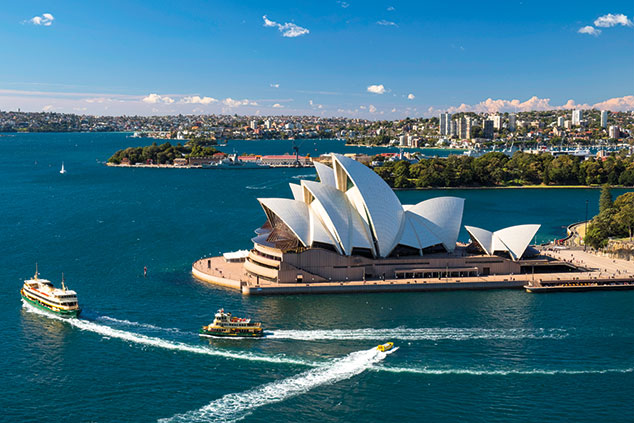
Australia’s “terrible” second-quarter GDP figures are “among the worst we have seen this century”, says Greg Jericho in The Guardian. The economy expanded by a mere 0.5% in the second quarter, implying an annualised rate of 1.4%.
Still, at least Australian homeowners have something to cheer about. A credit-fuelled housing bubble has been hissing air for much of the past two years, with prices falling an average of 7.3% in the year to May. Still, nationally, prices rose 0.8% last month, the biggest jump in two years, reports James Hall for news.com.au. In Sydney median prices picked up 1.9% in the three months to August. That should, in theory, make consumers feel wealthier and more willing to spend.
Lucky country is out of luck
Nevertheless the “lucky country”, which has gone 28 years without a recession, may yet run out of luck. Australian prosperity has been propped up over the past decade by a housing boom and commodity exports to China. But there seems little scope for these factors to keep bolstering growth.
By mid-2015, interest-only loans made up a staggering 46% of all new mortgages, according to Bloomberg data. That prompted a clampdown by authorities on loose lending practices. Yet household debt levels remain equivalent to an eye-watering 120% of GDP. That compares with 87% in the UK and just 53% in Germany.
What’s more, with wage growth stagnant, “Aussies just aren’t spending or eating out the way they used to”, says Jack Derwin on Business Insider. Retail sales fell 0.1% in July, with a larger 0.3% fall in discretionary purchases suggesting that households are actively tightening their belts.
A record 40% of Australian exports headed to China in June, reports David Uren on aspistrategist.org.au. “A decade ago it was just 20%.” That includes massive shipments of iron ore and coal, as well as consumer goods such as wine and baby formula.
China’s slowdown leaves Australia dangerously exposed, says Martin Farrer in The Guardian. One forecast suggests that if the Middle Kingdom’s economic growth halved to 3%, then “Australia would stand to lose… more than half a million jobs”.
The central bank has slashed interest rates to 1%. Yet cheap debt caused many of the current problems in the first place. With little left in the monetary toolbox, it falls to the government to serve up a rescue, says Matt Wade in The Sydney Morning Herald. That means more spending on infrastructure and “supply-side” measures such as tax reform to encourage business investment and employment. The government shows little inclination to loosen its tight fiscal rules, however. Get set for quantitative easing.